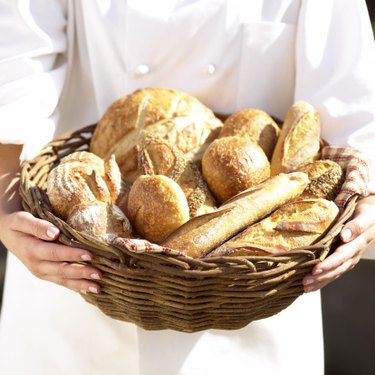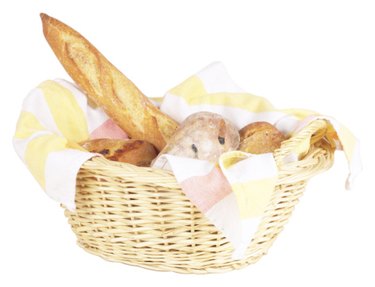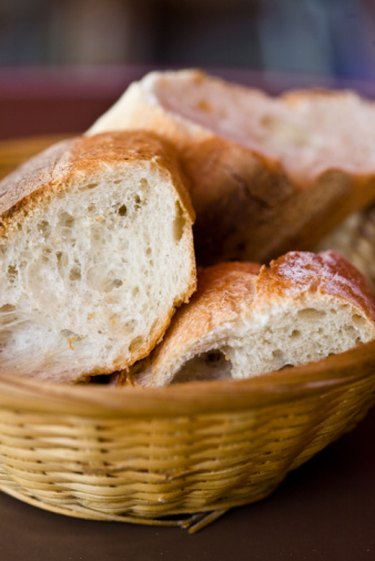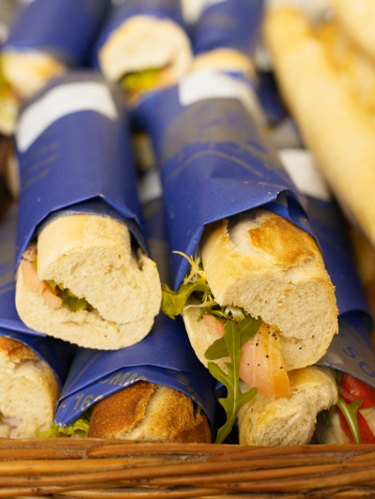
Bakery counters are flooded with various shapes, colors and sizes of bread, from ciabatta to bagels to pumpernickel. Two popular types are the baguette and the miche. Miche is also commonly called "country bread" or "pain de campagne." Similar in ingredients, these two loaves have been served on French families' tables for centuries.
Shape
Video of the Day

The first visible difference between a baguette and miche is the shape. Where baguettes are long and thin, miche are the exact opposite -- large, round loaves. An easy way to remember which is which is to relate the "b" in baguette with the "b" in baseball bat, and you'll have an instant image association for the shape.
Video of the Day
Ingredients

Both bread types consist of the basic ingredients of wheat flour, water, yeast and salt. They differ in that the traditional baguette never varies from the basics. It always uses all-purpose white flour, but a miche can be a combination of white, whole-wheat and rye flours. Also, miche are typically prepared with a natural leavener -- yeast collected from the surrounding environment through fermentation similar to an American sourdough bread -- whereas baguettes are started with a standard baker's yeast.
Texture

Baguettes are known for their incredibly crunchy exterior -- the crust -- and airy, light interior -- the crumb. The texture of the baguette is unique due to its preparation. Before baking a baguette, it is spritzed heavily with warm water to develop its crisp exterior. The miche texture ranges from a chewy to crispy crust and a dense, soft crumb dependent on which ingredients are used in the recipe.
Usage

Baguettes and miche have endless possibilities for use. Yet, each is suited better to specific delivery of certain food to the stomach. Baguettes are great for submarine sandwiches, spreading with butter and soft cheeses like Camembert, dipping in soups, used for crostini appetizers and made into croutons. Miche, on the other hand, are perfect used as sliced bread for sandwiches, dipped into gravies, made into breadcrumbs and used for French toast.